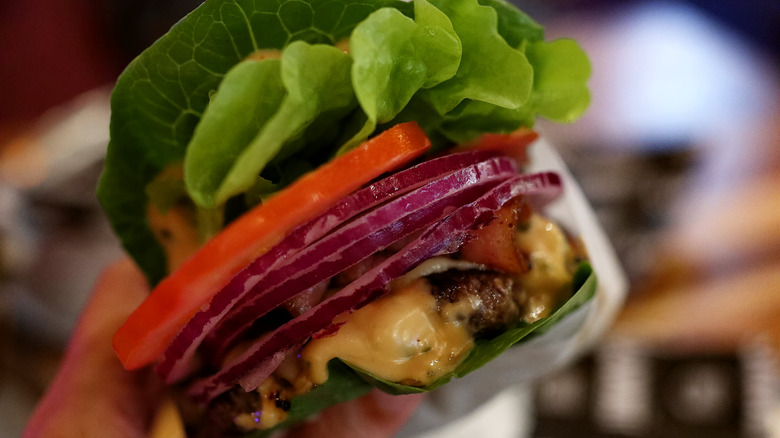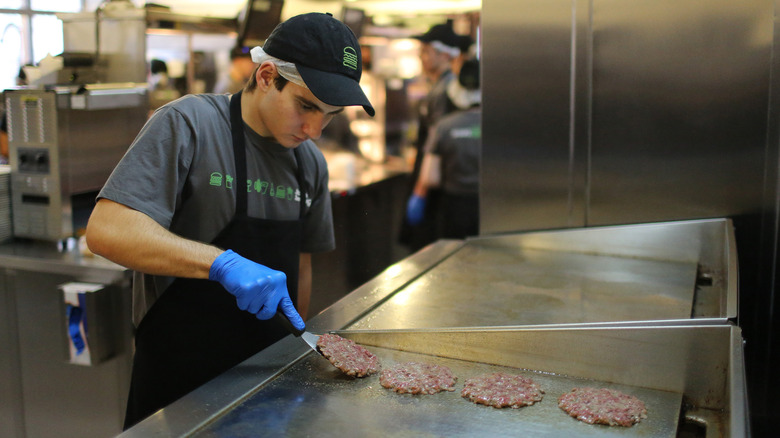Fast Food Joints Are Surprisingly Well-Equipped To Handle Food Allergies
For people with food allergies, eating in restaurants can be challenging, and they have to constantly be alert. Especially at fast food restaurants, the big eight common allergens — milk, eggs, fish, shellfish, tree nuts, peanuts, wheat, and soy — are particularly common. Before eating at Five Guys or Chick-fil-A, for example, people with peanut allergies should know these chains use peanut oil in their fryers.
Despite this, many of these chains are actually surprisingly allergy-friendly, because they can easily make modifications as needed and often have streamlined menus. In-N-Out Burger — which is finally starting to expand eastward — offers a "protein-style" burger, which skips the bun in favor of a lettuce wrap. Their fries are also cooked in soybean oil, in a dedicated fryer, to avoid cross-contamination.
The growing trend of customizable fast-casual chains like Chipotle and Blaze Pizza also means customers can avoid allergens easily. And restaurants are being proactive about allergen policies: In a change you might not have known about, in 2018, Wendy's switched the way employees spread ketchup to eliminate cross-contamination. In fact, the very nature of modern fast food chains could help explain why they're well-equipped to handle allergy issues.
The structure of fast food helps avoid allergy mishaps and cross-contamination
When it comes to avoiding allergens, the homogenized nature of many fast food establishments could actually be a positive aspect. In some restaurants, diners can face challenges when trying to determine whether they're allergic to a menu item, according to a 2011 review published in the journal Clinical and Translational Allergy. Researchers found that diners with food allergies can be stymied by factors including inconsistent recipes, menus being printed in non-native languages, cross-contamination in how dishes are prepared or served, and inaccurate or incomplete communication between back-of-house and front-of-house staff.
However, according to fast food employees, these may be mitigated at certain chain restaurants. Let's take McDonald's as a case study for how fast food chains avoid these barriers. The chain has been working with suppliers to ensure allergen labeling, and protocol requires employees to fully clean the grill when switching between breakfast menu items — many of which include eggs, a major allergen — and lunch, workers have said. Recipes are standardized, which facilitates food safety and eliminates ambiguity among staff and customers around how menu items were prepared.
Many chain restaurants publish detailed charts online that outline the allergens present in specific menu items and ingredients, although they are not legally required to do this. So although fast-food restaurants might be surprisingly accomodating to those with food allergies, you should consider calling a restaurant ahead of time to verify.

